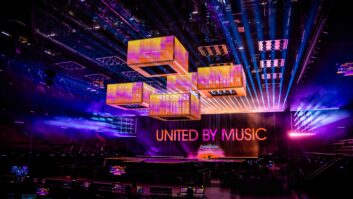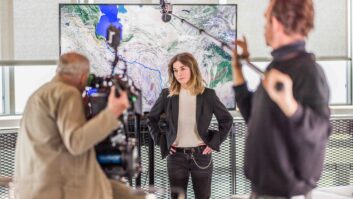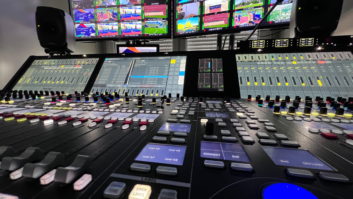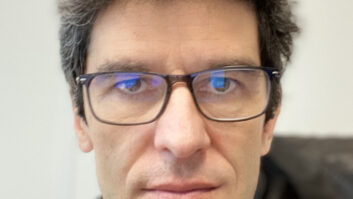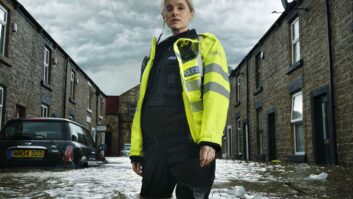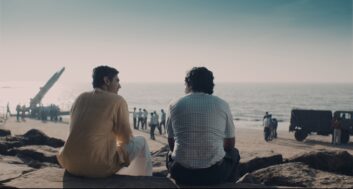 India has long been a beacon of creativity and cultural influence, especially noted for its colourful and lavish Bollywood film productions, which are a hallmark of entertainment in the country. Recently, however, there has been a marked increase in the popularity and recognition of domestic television series, altering the nation’s entertainment scene and enchanting viewers around the globe.
India has long been a beacon of creativity and cultural influence, especially noted for its colourful and lavish Bollywood film productions, which are a hallmark of entertainment in the country. Recently, however, there has been a marked increase in the popularity and recognition of domestic television series, altering the nation’s entertainment scene and enchanting viewers around the globe.
Included in this wave of new content is the web series Rocket Boys, available on the Indian streaming platform SonyLIV. The show, set as a period piece from the 1940s to the 1970s, is based on the true story of two of India’s most renowned scientists, Homi J. Bhabha and Vikram Sarabhai. Their combined efforts in nuclear power and space technology played a vital role in positioning newly independent India as a world power.
Having already successfully completed colour work on the first season of the hit show Rocket Boys, FutureWorks was asked to bring its colour grading expertise to the show’s second series and this time was also charged with providing all cameras and optics for the show, collaborating closely with the directorial team to develop shooting LUTs (lookup tables).
Season two delves into the early years of India’s independence, chronicling the mission to transform the nation into a nuclear power.
“We used the Sony Venice camera to create the textured look of the 2500 iso and also for the ability to shoot both spherical and anamorphic in 4K on the S35 format,” explains Tushar Desai, senior colourist at FutureWorks. “For lenses, we mixed the Hawk V lite and the Zeiss Superspeed mk2 and mk3 to differentiate the two timelines and further establish the look and feel of the period.”
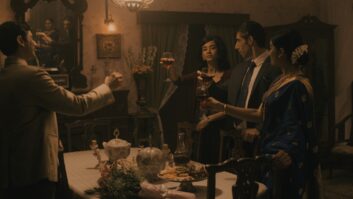 As the plot jumps back and forth, the aesthetics act as a signpost for viewers to signify when the scenes are taking place. The director, Abhay Pannu, knew that two distinct looks for the two eras were needed; the turning point of the change being India’s defeat in the 1962 war at the end of season one. To show the time transition, the FutureWorks team experimented with different colours and aspect ratios. While the first season is shot mainly in 2.35:1 widescreen, the second shifts largely to 2:1.
As the plot jumps back and forth, the aesthetics act as a signpost for viewers to signify when the scenes are taking place. The director, Abhay Pannu, knew that two distinct looks for the two eras were needed; the turning point of the change being India’s defeat in the 1962 war at the end of season one. To show the time transition, the FutureWorks team experimented with different colours and aspect ratios. While the first season is shot mainly in 2.35:1 widescreen, the second shifts largely to 2:1.
For the LUTs, the team initially started working backwards from Rec 709. However, the general consensus was that “the 709 felt too harsh and sharp for the ‘period look’” so the team used some film emulation presets from Baselight and merged all the tweaks we had made to the standard 709 LUT into the Baselight film emulation.
The outcome resembled a log-like LUT that featured a colour shift typical of Kodak 250D and 50D film stock, incorporating elements we had finalised for both the past and present looks. When we reached the grading stage, the team used this LUT as its initial reference but expanded the grade significantly beyond the scope of the shooting LUT, particularly for the second season.
While season one of Rocket Boys was created in SDR, the team had the extra challenge of working in an HDR workflow for season two, to meet the Dolby Vision standard.
“We switched from SDR to HDR for season two, in order to meet the Dolby Vision standard,” Desai adds. “This meant that we had to rework our pipeline, because the LUTs were not designed for HDR. Our desired look and feel was all about low contrast with darker tones while ensuring consistency and preserving the essence and texture that we established in season one. With the increased level of detail available in the Rec. 2020 colour space, and the fact that our desired look was characterised by low contrast and darker tones in some areas, it took us some time to adjust and achieve a similar look and feel while still preserving the essence and texture of the show.”
Colour grading in Filmlight’s Baselight, the same FutureWorks team worked across both seasons of Rocket Boys, with only around nine months between delivery for each. The tight timeline was problematic, which saw the team colour grading up to 600 shots for each of season two’s eight episodes, in just 20 days. “The time constraint was a major challenge,” says Tushar. “We couldn’t start work until the VFX shots arrived from another vendor, which meant we only had a very small window for colour grading.”
Among the more complex sequences were a rocket launch and an atom bomb detonation. “Both were shot in the desert and involved a high degree of VFX, so that there was a lot of colour work to add, in a short space of time,” adds Desai.
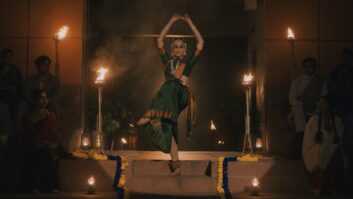 He adds that one the biggest challenges when it comes to colour correcting episodic content for OTT platforms is ensuring consistency across multiple episodes. “This includes colour grading each episode to match the overall aesthetics, as well as matching the colour between shots within each episode,” Desai continues. “To overcome this challenge, we worked closely with the director, cinematographer, and post-production team as we established the desired look and feel of the series. Having a well-organised workflow and utilising tools such as colour management systems helped streamline the colour correction process and enabled us to stay consistent across multiple episodes.”
He adds that one the biggest challenges when it comes to colour correcting episodic content for OTT platforms is ensuring consistency across multiple episodes. “This includes colour grading each episode to match the overall aesthetics, as well as matching the colour between shots within each episode,” Desai continues. “To overcome this challenge, we worked closely with the director, cinematographer, and post-production team as we established the desired look and feel of the series. Having a well-organised workflow and utilising tools such as colour management systems helped streamline the colour correction process and enabled us to stay consistent across multiple episodes.”
In addition to consistency, meeting the ever-changing technical delivery requirements of OTT platforms can be a significant learning curve when it comes to colour correcting episodic content. This may include colour space, bit depth, and other technical specifications that need to be met before the content can be uploaded to the platform. Staying on top of it was critical in ensuring that our team delivered the work on time and up to standard.
The creative minds behind the scenes proved that their dedication to detail could launch India’s entertainment scene into a dazzling new orbit.
